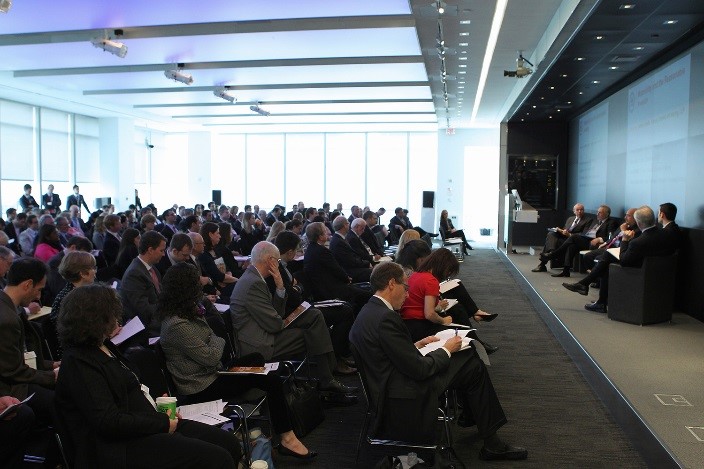
Date: 2025-10-14 Page is: DBtxt003.php txt00012795
Metrics Initiative
SASB ... Sustainability Accounting Standards Board
May 2014 ... An Insider’s Guide to The SASB Experience ... Meeting at Bloomberg
Burgess COMMENTARY
Peter Burgess
An Insider’s Guide to The SASB Experience
There is nothing quite like meaningful conversation. After a year of research, stakeholder engagement, feedback and refinement, SASB celebrated the reveal of its latest research results with evocative discourse about the Services Industry and its role in non-financial reporting. With over 190 participants representing 120 companies, the May Delta Series, which is the research process capstone, brought together its Industry Working Group participants as well as other integral stakeholders, to discuss the outcomes of their sector-specific research.

Sustainability Finance
The event commenced with a session titled, “The Intersection between CSR Reports and the 10-K: An Alliance Between Finance and Sustainability,” and featured a diverse panel of experts who chose to share their experience with SASB and sought (and achieved) buy-in for stakeholders in their own companies. Sustainability and Finance leaders from Wyndham, Jones Lange LaSalle, Ernst & Young and Boyd Gaming Corporation gave the audience their take on tracking, measuring, and analyzing sustainability metrics, and how their companies found the intersection between quantitative finance information and qualitative sustainability data. Five takeaways emerged from the panel.
(1) Persistence is the Pathway to Adoption– It was evident from each of the panelists that it can be a slow process to gain buy-in from key organizational stakeholders, and to “sell” the value of tracking, measuring, and analyzing something that they hadn’t previously tracked. Foresight and persistence are the keys to getting the sign-off at the top and if at first there isn’t immediate adoption, it is up to the leadership to continue to drive the discussion and make the recommendations each and every year until adoption is achieved. SASB standards can be a tool for change management, and it is important to socialize the idea early and often.
(2) Utilize the Standards to Drive Management and Collaboration– Perhaps one of the most interesting conversations stemmed from the concept of inter-team collaboration and management. The panelists saw a more engaged staff that voiced its interest in participating in tracking and reporting. CFOs, CEOs, and CSOs met to discuss the goals and methodology behind employing the SASB metrics. For each of the panelists, utilizing the SASB standards provided an opportunity to bridge the gap between finance and sustainability and increase cross-sectional interaction within their organizations.
(3) There is a Need for a Universal Reporting Language- When convening corporate leadership collaboration, the panelists expressed a need for a common language with which to discuss metrics and reporting. The SASB metrics became their universal language to discuss sustainability and their financial impact within an existing framework- the Form 10k. Instead of creating their own framework or measurement system, developing training and buy-in for an original report, the panelists relied on the SASB research and Form 10K to guide their decisions and reporting methodology. It was a language that was comfortable amongst the leadership from finance, legal, and sustainability.
(4) Create a Path for Corporate Resilience- Sometimes the question “what if my investors say this isn’t relevant?” arises from a conversation about the SASB standards. Instead of seeing this as an opportunity to overwhelm investors with new information, the panelists believed that the tracking, analysis, and disclosure of non-financial, material information created a plan for long-term corporate resilience. Using SASB standards gives companies the chance to be competitive in the marketplace.
(5) Bring the Value to Your Board– Each panelist expressed the importance of support from their Board of Directors, and the need to show the value of reporting using SASB metrics. The panelists discussed GHG reduction, cost savings in water usage, and the economic impacts of global climate change. While economic impact is universally understood, many of the panelists utilized the SASB standards as brand impact and risk management tool, which resonated with their Board Members and often elevated the interest in using SASB standards.
The Delta Series is an ongoing workshop convened once per quarter. If you are interested in participating in the Delta Series or an Industry Working Group please visit our Delta Series Page.